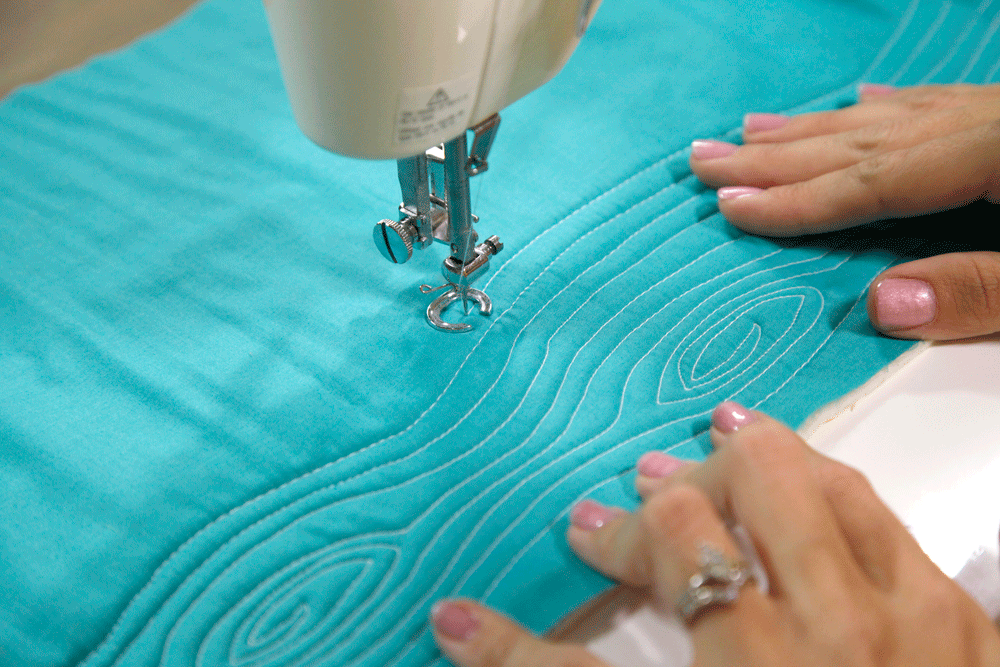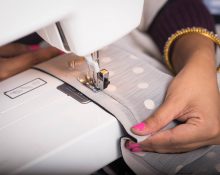Quilting is a type of patchwork that combines several techniques. The technique involves creating three-dimensional appliques, collages with stitches and the usual patchwork sewing. Such work can be carried out either manually or using a sewing machine. The latter option, it is worth saying, is in great demand.
What is quilting on a sewing machine?
This method of creating textiles and interior items is quite labor-intensive. The work will require perseverance, attentiveness and special tools. The manual process takes a lot of time - with a machine everything goes easier and faster.
Quilting on a sewing machine is a technique for creating a three-dimensional pattern. It is usually represented by several layers: top (decorating), second (stuffing), third (lining). The decorative part can consist of fabric patches or be a pattern made up of seams. The stitches are formed by a machine.

Features of machine quilting
You can create volumetric or flat embroidery either on an ordinary machine or purchase a device that has special functionality (a special type of foot). Additionally, you will need a template, scissors, backing paper, rulers, markers (disappearing), and a knife (roller). It is better to take fabrics that are thin, but dense, like threads.
The drawing created using this technique can be of different heights and volumes. They can be adjusted by choosing a suitable filler. Most often they use padding polyester, but you can also use something else. It is worth remembering that the product will only be voluminous if the filling is not quilted. If you take something else, the pattern will come out wavy.

The main thing in quilting on a sewing machine is the front layer. It sets the tone for the entire product. Of course, patchwork works look more impressive, but embroidery will also find its lover. Both the first and second options look interesting.
Advice! Those who are just starting to master quilting techniques need to practice on straight lines. They quilt perfectly on any machine.
You can use both machine and hand stitching. In the first option, the stitches will be perfectly even and neat.
Directions and technologies
Most often, craftswomen use either Japanese or Celtic techniques. Products created in these directions look the most impressive and elegant. At the same time, the Japanese style involves the use of stitches that connect the fabric layers together. This allows you to create intricate patterns on ready-made textiles and clothing. The motifs are natural scenes. You can also find intricate tassels and fringes.
The Celtic style of quilting is not so fancy and difficult to perform.But you can’t deny him beauty and originality. If the Japanese are more attracted to flora, then geometric patterns and curls are more common here. The “trick” of the style is the application of bias tape in the form of a Celtic knot.

@Protkan.com
Popular types of stitches
The most commonly used type in quilting is considered to be “forward needle”, however, when working on a machine, you can choose other options:
- Straightforward. Form intersecting straight and parallel lines.
- Wavy. Used for decoration together with patchwork.
- Twisty. The stitching can be in different directions, which allows you to create a free fantasy pattern.
- Quilted lattice. Suitable for bedspreads. Single-spaced markings.
- Curved seam. This stitch allows you to embroider leaves, feathers and other rounded elements.
Advice! When mastering new stitches, don’t forget to practice on separate pieces of fabric. This is the only way to achieve perfect execution.
The quilting function on a sewing machine allows you to create an interesting bedspread, blanket, or pillowcase. In addition, similar decor on clothes will appeal to adherents of Scandinavian, rustic and boho styles.


 0
0






Where can I find quilting patterns? Not everyone can draw.And the stitches are very beautiful.
Hello! On the Internet there are a bunch of all kinds of drawings - ready-made, as well as many master classes in video mode.
Indeed, on the Internet “there are a lot of all kinds of drawings,” you are right.
And all these publications, for the most part, are written as carbon copies.
They are, of course, very interesting, but it’s sad that these craftswomen don’t have their own works.